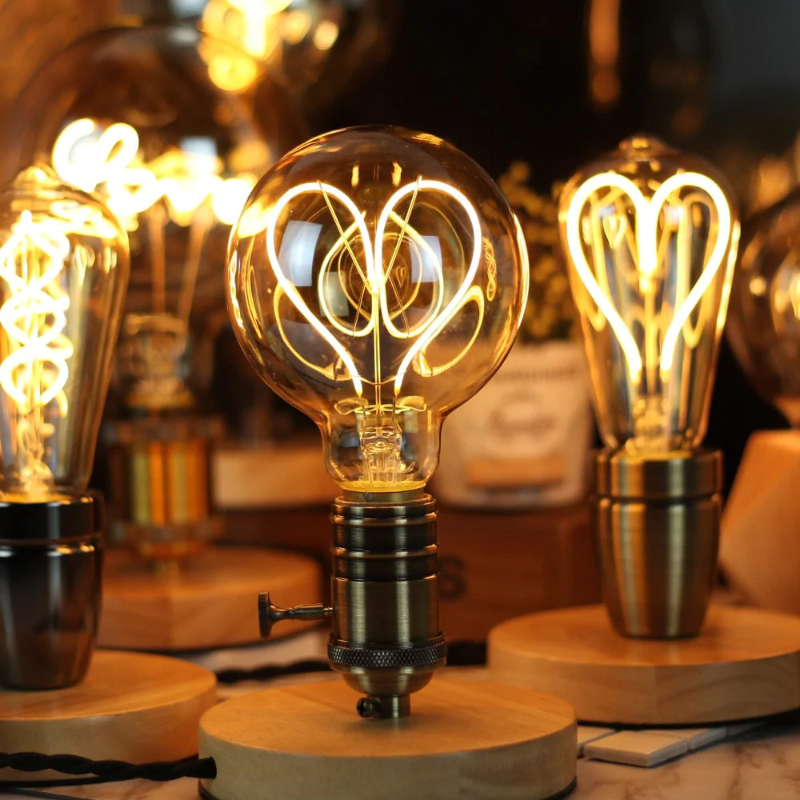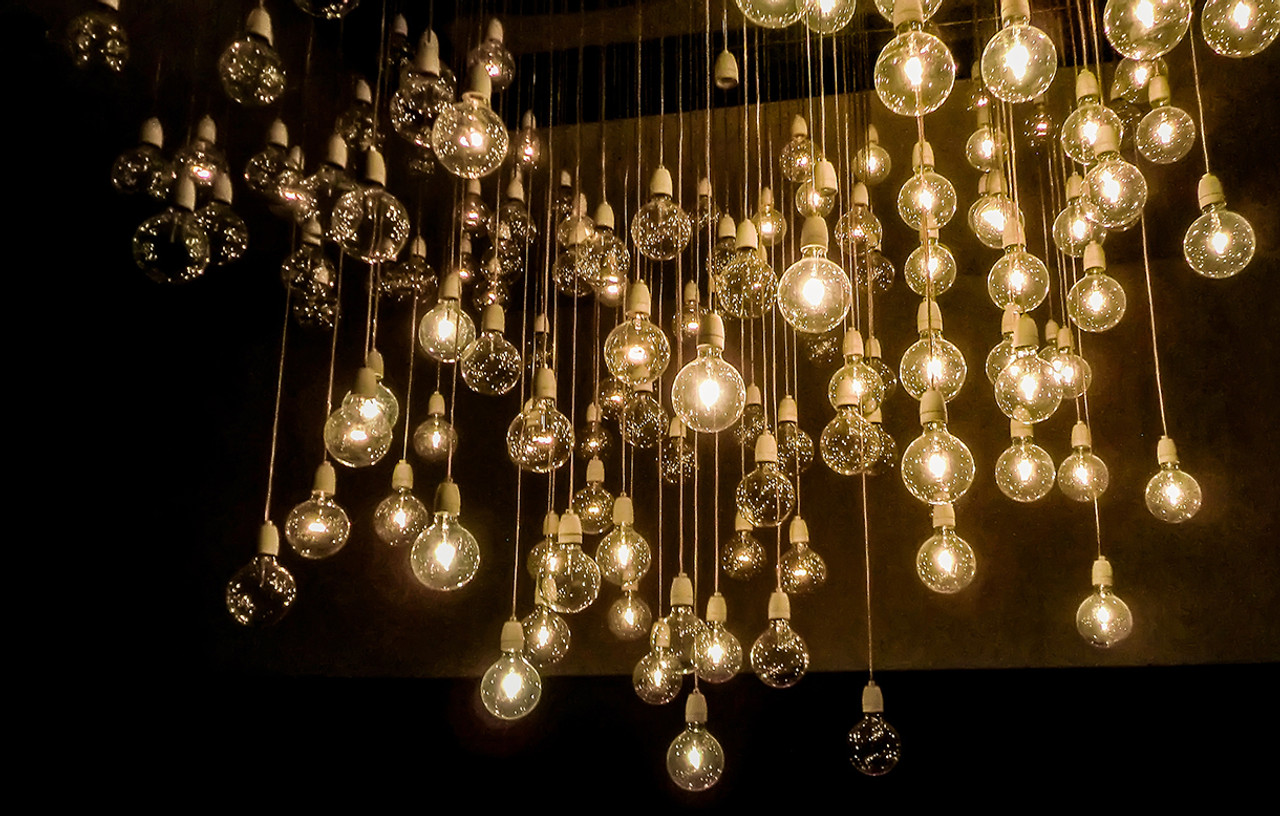When it comes to creating the perfect ambiance in your home, lighting plays a crucial role. One of the most versatile options available is the decorator light bulb. In this comprehensive guide, we’ll delve into everything you need to know about decorator light bulbs—from types and benefits to installation tips and decorating ideas. As someone who has experimented with various light bulbs over the years, I’m excited to share my insights and personal experiences with you. Let’s get started!
What are Decorator Light Bulbs?
Decorator light bulbs are specialized bulbs designed to enhance the aesthetics of light fixtures while providing adequate illumination. Unlike standard bulbs, decorator light bulbs often feature unique shapes, colors, and finishes that can complement various home styles and themes.
Types of Decorator Light Bulbs
Decorator light bulbs come in several varieties. Let’s break down the most popular types:
1. Vintage Edison Bulbs
These bulbs are known for their old-fashioned filament design, creating a warm and nostalgic glow. They’re perfect for industrial or rustic decor.
2. Globe Bulbs
Globe bulbs offer a round shape and are often used in pendant lighting to create a sophisticated look. They are available in various sizes and finishes.

3. Candelabra Bulbs
Designed to mimic the look of traditional candle flames, candelabra bulbs are ideal for chandeliers and sconces, adding a touch of elegance.
4. Color Changing LED Bulbs
These versatile bulbs allow homeowners to change the light color according to their mood or occasion, making them suitable for celebrations or creating a cozy atmosphere.

Benefits of Using Decorator Light Bulbs
Using decorator light bulbs provides several advantages:
- Aesthetic Appeal: Enhance your interior design with stylish bulbs.
- Energy Efficiency: Many decorator bulbs, especially LEDs, consume less energy.
- Longevity: Quality decorator bulbs can last for years, reducing replacement costs.
- Variety: A wide range of styles allows you to match bulbs to your decor themes.
Choosing the Right Decorator Light Bulb
With so many options available, selecting the right decorator light bulb can be overwhelming. Here are some factors to consider:

1. Determine the Purpose
Are you looking for ambient lighting, task lighting, or accent lighting? Your needs will dictate the best type of bulb to use.
2. Consider the Style of Your Fixture
Choose a bulb that complements your light fixture. For example, a candelabra bulb is perfect for ornate chandeliers, while globe bulbs suit modern pendant lights.

3. Light Color and Temperature
The temperature of the light can significantly affect the mood of your room. Warm white (2700K-3000K) creates a cozy atmosphere, while cool white (4000K-5000K) is ideal for workspaces.
4. Energy Efficiency Rating
Look for bulbs with a high energy efficiency rating to save on your electricity bill while being environmentally friendly.

Comparison Table: Common Decorator Light Bulbs
| Type | Lifespan | Energy Consumption | Color Temperature | Cost |
|---|---|---|---|---|
| Vintage Edison | 1,000-2,000 hours | 60-100W | 2200K | $5-$15 |
| Globe Bulb | 15,000 hours | 9-15W (LED) | 2700-5000K | $10-$30 |
| Candelabra | 1,000-2,500 hours | 40-60W | 2700-3000K | $4-$12 |
| Color Changing LED | 15,000-25,000 hours | 8-14W | 2200-6500K | $15-$35 |
Installing Decorator Light Bulbs
Once you’ve chosen the perfect decorator light bulb, it’s essential to install it correctly. Here’s a step-by-step guide:

Step 1: Turn Off Power
Safety first! Turn off the power to the fixture at the circuit breaker to avoid any electrical hazards.
Step 2: Remove the Old Bulb
Carefully unscrew or remove the old bulb. If it’s a fragile bulb, handle it gently to prevent breakage.

Step 3: Insert the New Bulb
Take your new decorator light bulb and screw it into the socket. Ensure it’s secure but avoid over-tightening.
Step 4: Restore Power
Turn the power back on and test your new bulb. Adjust the fixture’s settings as needed.
Decorating with Light Bulbs
Using decorator light bulbs isn’t just about functionality; it’s also about creativity. Here are some engaging ways to incorporate them into your decor:
Accent Lighting
Use globe bulbs in unique fixtures to highlight art pieces or architectural details. They draw attention without overwhelming the space.
Layering Light
Create a layered look by combining different types of bulbs and fixtures across your room. This approach adds depth and interest.
Festive Occasions
Color-changing LED bulbs can help set the mood for any festive occasion. Adapt your home’s lighting to suit holidays or celebrations.
Pros and Cons of Decorator Light Bulbs
Pros
- Enhances the interior aesthetic
- Variety in design and color
- Energy-efficient options available
- Can create specific atmospheres or moods
Cons
- Some can be more expensive than standard bulbs
- Compatibility issues with dimmer switches
- May require specific fixtures for installation
Personal Experience with Decorator Light Bulbs
My journey with decorator light bulbs started when I redesigned my dining room. I wanted to create a cozy, intimate atmosphere for family gatherings. I opted for vintage Edison bulbs in a rustic pendant fixture. The result was magical! The warm glow transformed the room, making it feel inviting. Since then, I’ve become a passionate advocate for using decorator light bulbs to elevate home spaces.
Where to Buy Decorator Light Bulbs
You can find a wide selection of decorator light bulbs at various retailers, both online and in-store. Here are some trusted sources:
- Amazon: Great for variety and customer reviews.
- Home Depot: Offers a range of bulbs and fixtures.
- Lowe’s: Known for home improvement products.
- Local Lighting Stores: Often have unique, specialty bulbs.
FAQs About Decorator Light Bulbs
1. Are LED decorator light bulbs worth the investment?
Absolutely! LED decorator light bulbs typically last longer and consume less energy than traditional bulbs, making them a cost-effective choice in the long run.
2. Can I use decorator light bulbs in any fixture?
Most decorator light bulbs can fit standard fixtures, but always check the specifications to ensure compatibility with your lighting setup.
3. What is the best color temperature for living spaces?
For living spaces, a warm white light (2700K-3000K) is often recommended as it creates a cozy atmosphere.
4. How can I make my light bulbs last longer?
To extend the lifespan of your bulbs, avoid frequently turning them on and off, and use quality fixtures compatible with the bulb type.
5. Can I mix different types of decorator light bulbs in one fixture?
While it’s possible to mix bulbs, ensure they have similar wattage and are compatible to prevent fixture damage.
Final Thoughts
Decorator light bulbs are more than just functional items; they are essential elements of your decor that can transform your living spaces into warm, inviting environments. Whether you opt for vintage Edison bulbs to create a retro vibe or color-changing LEDs for versatility, the right choice can significantly influence the ambiance of your home.
If you still have questions or want to share your experiences with decorator light bulbs, please leave your comments below! Let’s illuminate our spaces beautifully together.